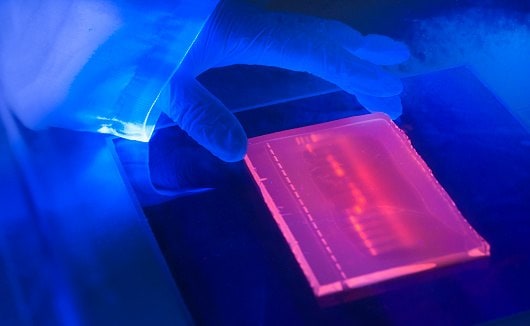Agarose: Properties and Research Applications

We provide a wide array of agarose products with varying gel strengths, melting temperatures, gelling temperatures, and electroendosmosis (EEO) levels to accommodate all of your research applications. We maintain reliable agarose sources and continue to develop new production capabilities to provide you with an uncompromising standard of quality and consistency.
pHast Pack™ READY-TO-POUR AGAROSE GELS
Limited time in the lab? pHast Pack™ ready-to-pour agarose gels are available in 1% agarose in TAE buffer or 1% agarose in TBE buffer. They are designed to simplify your work so you can spend more time focused on your research. Simply mix with water, gently heat to dissolve the powder blend to quickly prepare reliable agarose gels for electrophoresis.
Products
What is Agarose?
Agarose is a polysaccharide that is isolated and purified from agar or agar-bearing marine algae (sea kelp). It is a natural polymer, made up of alternating β-D-galactose and 3,6-anhydro-L-galactose units of agarobiose in its chemical structure. The linear agarose polymer forms chains which create fibers that are flexible and form a web of channels with diameters from 50 nm to 200 nm, depending on the amount of agarose used.
How is Agarose Used?
Agarose is non-toxic and has several properties and specifications that make it useful as a gelling agent in many applications, such as nucleic acid electrophoresis, immunodiffusion techniques, gel plates or overlays for cells in tissue culture, cell culture media, gel chromatography, affinity chromatography, and ion exchange chromatography. Gel electrophoresis is a common life science laboratory technique used to extract biological molecules based on their size, such as in DNA separation and DNA detection.
Key Agarose Properties
- Sulfate content - Sulfate is the major ionic group present and is therefore used as an indicator of purity.
- Gel strength - The force that must be applied to the gel to fracture it.
- Gel point - The temperature at which an aqueous solution of agarose forms a gel upon cooling. Agarose solutions exhibit hysteresis when transitioning from liquid to gel. In other words, the gel point is not the same as the melting temperature.
- Electroendosmosis (EEO) – Refers to the transfer of liquid through a gel. The anionic groups of the agarose gel are attached to the matrix and cannot migrate, while the dissociable countercations migrate to the cathode within the matrix to generate EEO. Since electrophoresis of biopolymers is usually toward the anode, EEO can interfere with separation by internal convection.
Related Resources
- Article: Nucleic Acid Electrophoresis Protocols & Introduction
An introduction to Nucleric Acid electrophoresis and standard protocols for Agarose gel electrophoresis for DNA, RNA & polyacrylamide gel electrophoresis for DNA.
- Flyer: pHast Pack™ Electrophoresis
The pHast Pack™ platform was developed to expedite your research and provide a convenient solution for tedious lab tasks. Our buffers and new ready-to-pour agarose gels are formulated to save time and effort in native RNA and DNA electrophoresis assays.
To continue reading please sign in or create an account.
Don't Have An Account?